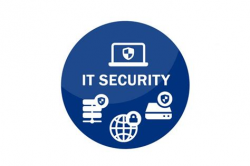If you are an IT security leader, you must have a firm grasp of budgeting. This budget should account for all people, processes, and tools necessary for effective security. It should also incorporate metrics for success and failure. Set up review meetings and evaluate the impact of new technologies. This will help you determine whether your security efforts are effective. Then, determine what areas of the budget will require more investment. Here are some budgeting tips for IT security leaders.

Do not be afraid to discuss your security budget with your boss. This is an opportunity to customise your security strategy to your company’s goals, national security trends, and global economic direction. Begin by asking your boss to explain the big picture in terms of the company’s security. Then, explain why a new security tool is needed and why it requires a new budget. Include your goals for the new tool. Your boss will likely be impressed and want the investment. For more details on Cybersecurity Risk Management, go to jmpcyberinsurance.co.uk/cyber-security-risk-management
Make sure the security budget is focused on risk reduction. By understanding risk concentrations and communicating those to executive and board leaders, security leaders can make a stronger case for investments in security. Make sure to tie security investments to business impacts and operational efficiencies. As an IT security leader, you’ll need to understand the risk concentrations of your company’s data. A comprehensive risk assessment can help you build a solid case for spending more on security.
In addition to internal cybersecurity budgeting, consider hiring an external cyber security expert to help you with the budget. An external expert will know the market rates and can give you advice on how to make a convincing business case for cybersecurity investments. This way, you’ll be able to get the most out of your security investment. When you hire a cyber security expert, you’ll benefit from their knowledge, certification, and experience documenting cybersecurity budgets.

Security performance is often measured by a vague scale. But senior management is likely looking for more tangible metrics. That means leveraging metrics that are directly related to outcomes. For example, security rating correlates with enhanced risk of data breaches. Companies with a poor security rating are nearly five times more likely to experience a breach. These metrics are valuable for demonstrating the value of your security programme to senior management.
As you build your cybersecurity budget, keep in mind that it’s an incredibly complex process. Consider multiple factors, including outside influences, and make sure that the spending levels are in line with the level of protection and risk you want to achieve.
